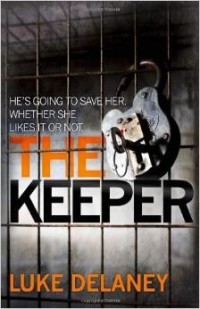In this, the second DC Corrigan novel, Corrigan is once more pitted against a dangerous killer. But, unlike the highly intelligent ‘cold killer’ of the first book, Thomas Keller is a pathetic little man. A sleazy, nasty little man, all the more dangerous for being inadequate. Not to mention utterly deranged. He is obsessed with a woman called ‘Sam’, someone he wants but cannot have. In an attempt to recreate her he stalks and abducts women who resemble her. At first he treats them with tenderness; this soon turns to viciousness when his captives don’t measure up to his unrealistic illusions.
On the cops’ side we have Detective Inspector Sean Corrigan, Detective Sergeant Sally Jones, Detective Sergeant Donnelly and others we met previously in ‘Cold Killing’. At the outset the case looks like a typical ‘missing persons’ incident and as such would not normally be within the remit of the murder team. However, due to Sean Corrigan’s uncanny ability to get a sense of a killer, he knows that sooner or later they will have a body on their hands. So it becomes a tense race against time.
As before, the book starts with the killer. This time we know his name from the outset. We also know he is a postman, so straight away we are ahead of the detectives. And continue to be so. Also, as before, the point of view alternates between Keller, Corrigan, Sally Jones and one of the victims, Louise Russell. This last point of view is a clever touch, which adds to the tension as the story unfolds. To say any more would be to risk a spoiler.
This linking of one book with the other is neat. However it’s only fair to warn you that the name of the killer in Cold Killing, the first book in the series, is revealed in the first chapter of The Keeper.
After we are introduced to the creepy Thomas Keller and his victim, the action moves swiftly to the Central Criminal Court, the Old Bailey. Here the trial that is taking place is that of the villain of the first novel. The final verdict ‘unfit to plead’ sees the perpetrator ordered to be detained in a secure psychiatric unit. Thus robbing the police of the satisfaction of a trial and conviction. And inflicting further psychological damage on Sally Jones, in particular.
This linking of one book with the other is neat. However it’s only fair to warn you that the name of the killer in Cold Killing, the first book in the series, is revealed in the first chapter of The Keeper. So if you haven’t read the first book but intend to read it, don’t start with this one as it will ruin all the tension and twists and turns of Cold Killing. I think this should be pointed out to prospective readers by the publishers.
One of the things that set Luke Delaney apart from many other crime writers is the fact that he is an ex-Murder Squad detective. Consequently the settings are authentic, rather than researched. Throughout the book, fascinating insights take us into the real world of the police, warts and all. Among these, DI Corrigan’s views on the transfer of the Forensic Laboratory from the Home Office to the private sector. His dismissive attitude towards Anna, the criminal psychiatrist. The descriptions of the effects of lack of sleep and the overwhelming weariness that afflicts officers during a case. And the, sometimes fatal, effect this has on family life. There are many such realistic touches.
The descriptions of sexual violence and intimacy border on the pornographic. At times these descriptions are very well written, but they are dwelt on and repeated in a way that I find disturbing.
Two things in particular spoilt my enjoyment of what is essentially an original, fast paced thriller. While there are at times perceptive glimpses into the workings of the mind of the killer and the thought processes of the police and other characters, these are outweighed by the rambling and irritating repetitions of ‘inner thoughts’ and descriptions. The second bothersome element is the fact that the descriptions of sexual violence and intimacy border on the pornographic. At times these descriptions are very well written, but they are dwelt on and repeated in a way that I find disturbing.
All this became so wearisome that at one point I seriously considered abandoning the book. It really does need a thorough edit and has all the hallmarks of a second book rushed out to capitalise on the success of the first. I should point out, however, that I am reading both as a reader and a writer, so things that bother me while wearing my ‘writer hat’ may not bother another reader.
There are plenty of positives about this book, lots of good things. This is evidenced by the plethora of five stars. Indeed all reviews average out at 4.18, which is very high indeed and proves how popular Luke Delaney has become. I’d also like to add that I applaud him for experimenting both with points of view and in not sticking to the same type of criminal. I will be interested to know what he does next.




